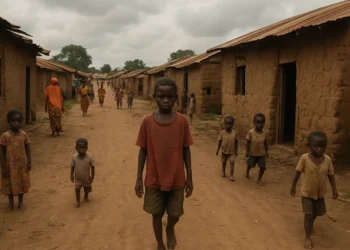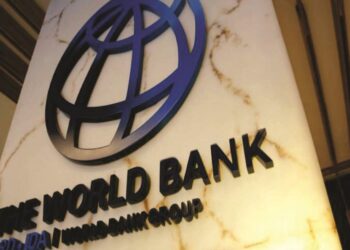The World Bank has raised alarm over the growing impact of conflict and instability on 39 developing economies, including Nigeria, warning that these states are being left behind on key development indicators, with extreme poverty, hunger, and unemployment rising at alarming rates.
This is according to the World Bank’s latest comprehensive assessment of conflict-affected economies, its first since the COVID-19 pandemic.
The report paints a bleak picture, noting that while other developing countries are seeing moderate growth, conflict-afflicted economies are regressing.
The 39 economies labelled as FCS (fragile and conflict-affected situations) include Afghanistan, Burkina Faso, Burundi, Cameroon, Central African Republic, Chad, Comoros, Congo, Democratic Republic of Congo, Rep., Eritrea, Ethiopia, Guinea-Bissau, Haiti, Iraq, Kiribati, Kosovo, Lebanon, Libya, Mali, Marshall Islands, Micronesia, Fed. Sts., Mozambique, Myanmar, and Niger.
Others are Nigeria, Papua New Guinea, São Tomé and Príncipe, Solomon Islands, Somalia, Fed. Rep., South Sudan, Sudan, Syrian Arab Republic, Timor-Leste, Tuvalu, Ukraine, Venezuela, West Bank and Gaza, Yemen, and Zimbabwe.
Key findings
According to the Bank, since 2020, per capita GDP in conflict-affected countries has shrunk by an average of 1.8% annually, while growing by 2.9% in other developing economies.
The World Bank estimates that 421 million people in these countries now live on less than $3 a day, more than the rest of the world combined.
That number is projected to climb to 435 million by 2030, representing nearly 60% of the world’s extreme poor.
“For the last three years, the world’s attention has been on the conflicts in Ukraine and the Middle East. Yet more than 70% of people suffering from conflict and instability are Africans. Misery on this scale is inevitably contagious,” said the World Bank’s Chief Economist, Indermit Gill.
- The Bank noted that half of the countries facing conflict or instability today have been in such conditions for 15 years or more.
- It added that out of the 39 economies currently classified as facing conflict or instability, 21 are in active conflict.
- The World Bank noted that in developing economies in general, the extreme-poverty rate has been whittled down to single digits—just 6%. However, in economies facing conflict or instability, the rate is nearly 40%.
Economic stagnation
Unlike other developing economies, the Bank said economies struggling with conflict or instability have been unable to create enough jobs on average to keep pace with population growth.
“Economic stagnation—rather than growth—has been the norm in economies hit by conflict and instability over the past decade and a half,” the World Bank Group’s Deputy Chief Economist and Director of the Prospects Group, M. Ayhan Kose, said.
“The global community must pay greater attention to the plight of these economies. Jumpstarting growth and development here will not be easy, but it can be done, and it has been done before. With targeted policies and stronger international support, policymakers can prevent conflict, strengthen governance, accelerate growth ,and create jobs,” he added.
Potential for growth
The Bank, however, noted that despite their challenges, these economies hold several potential advantages, which, with the right policies, could help reignite growth.
It said profits from natural resources, minerals, forests, oil, gas, and coal amount to more than 13% of their GDP on average, which is three times the share for other developing economies.
“Several economies, especially the Democratic Republic of Congo, Mozambique, and Zimbabwe, are rich in minerals needed for renewable-energy technologies such as electric vehicles, wind turbines, and solar panels,” the Bank stated.
- While noting that an expanding population is a long-term advantage, the World Bank said in most advanced and developing economies, the working-age population has already begun to stabilize or shrink, but this is not so in economies afflicted by conflict or instability, where the working-age population is expected to expand steadily.
- According to the Bank, by 2055, nearly two out of every three people in developing economies will be of working age—a larger share than anywhere else in the world.
It, however, added that reaping a “demographic dividend,” however, will depend on ramping up investments in education, health, infrastructure, and building a vibrant private sector that can generate more and better jobs.






















